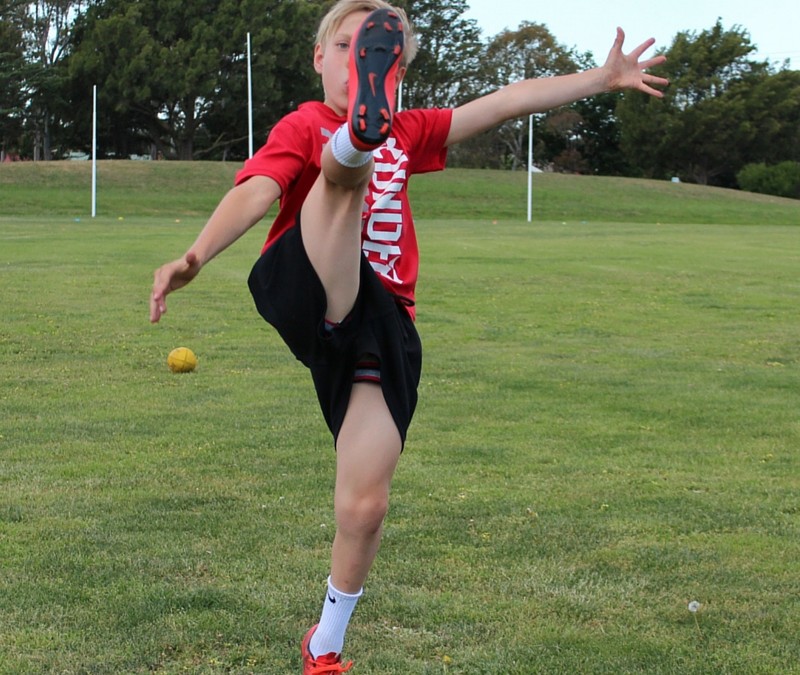
Kicking Drop Punts – Technique
Kicking more and more is becoming a talking point within junior development and why so many juniors are struggling to kick an effective drop punt towards a specific area with control.
Kicking a drop punt is very much a taught skill and the earlier you can start to develop the correct technique the better especially with the assistance of video analysis giving junior’s consistent visual feed back is very important tool for their development. The benefit of visual feed back is that we can freeze a particular area and really highlight the area that’s needs to be addressed or complimented. We can also use the footage to compare against current AFL players and maybe even model your technique of one of the AFL greats.
Areas that juniors consistently struggle with kicking a drop punt.
1, Ball Grip
2, Ball Drop
3, Follow through (Point the toe)
4, Getting the ball to spin backwards
One of the great ex AFL players and now current coach of Collingwood Nathan Buckley share’s his views on kicking a drop punt which reinforces what we are educating at vidafooty.
Our very own Anthony Rocca will also explain to us his views on kicking the drop punt.
If you child wants to improve their kicking, click here to view our upcoming events.
If you want to organise a private kicking lesson, call Vince on 0417 581 117

